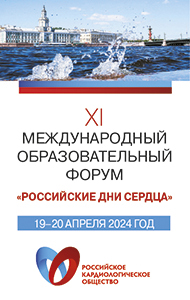Ischemic stroke occurs more frequently than hemorrhagic stroke in PCI
Patients undergoing primary PCI are three times more likely to experience ischemic stroke than hemorrhagic stroke, according to recent findings.
The researchers noted that the prevalence of incident ischemic stroke complications among patients undergoing primary PCI increased between 2007 and 2012, while hemorrhagic stroke became less common during this period.
The study included data collected from the British Cardiovascular Intervention Society database on 426,297 patients who underwent primary PCI between 2007 and 2012. Rates of stroke complications were evaluated by the year PCI was performed. Thirty-day mortality and in-hospital MACE (defined as a composite of in-hospital mortality, MI, re-infarction and revascularization) with stroke complications served as outcome measures.
Ischemic stroke or transient ischemic attack occurred in 436 patients, or 0.1% of the cohort. Hemorrhagic stroke complications were reported in 0.03%.
In 2007, ischemic stroke or TIA complications occurred in 0.67 (95% CI, 0.47-0.87) per 1,000 patients vs. 1.14 (95% CI, 0.94-1.34) per 1,000 patients in 2012 (P = .006). Conversely, a nonlinear decrease was reported for hemorrhagic stroke rates, from 0.29 (95% CI, 0.19-0.39) in 2007 to 0.15 (95% CI, 0.05-0.25) per 1,000 patients in 2012 (P = .009).
Results of an analysis adjusting for baseline clinical and procedural demographics indicated an independent association between ischemic stroke and both key outcomes (30-day mortality, OR = 4.92; 95% CI, 3.06-7.92; in-hospital MACE, OR = 3.11; 95% CI, 1.83-5.27).
Hemorrhagic complications yielded a larger increase in risk for 30-day mortality (OR = 13.87; 95% CI, 6.37-30.21) and in-hospital MACE (OR = 13.5; 95% CI, 6.3-28.92).
No increase in transient ischemic attack rates was reported from 2007 to 2012. However, ischemic stroke rates increased from 0.33 (0.23-0.43) in 2007 to 0.75 (0.55-0.95) in 2012.
The researchers noted that several factors related to ischemic stroke risk, such as average age, use of circulatory support devices, treatment for STEMI and the prevalence of stroke history or valvular heart disease, all increased during the evaluated period. The observed reduction in rates of hemorrhagic stroke complications could be linked to a significant decrease in the incidence of thrombolysis (9.26% in 2007 vs. 1.16% in 2012; P < .001), they wrote.
“We have shown that the incidence of ischemic stroke complications in contemporary PCI practice is threefold greater than that of hemorrhagic stroke, with ischemic stroke complications increasing in incidence over time, whilst hemorrhagic stroke complications have decreased, and that these changes in incident rates have been driven through changes in clinical, procedural, drug-treatment, and demographic factors over time,” the researchers concluded. “Both ischemic and hemorrhagic strokes are rare but devastating complications with high 30-day mortality and in-hospital MACE rates.” – by Rob Volansky
Disclosure: The researchers report no relevant financial disclosures.
Source: www.healio.com






